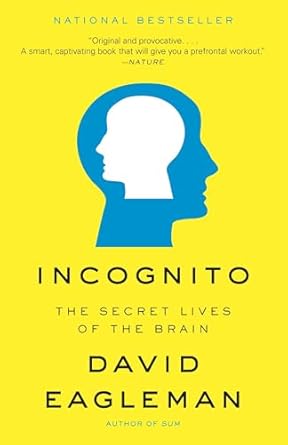What Causes Déjà Vu? Unraveling the Science of a Mind Glitch
You walk into a room you’ve never visited, yet every detail feels intensely familiar. You have a conversation and are suddenly struck by the unshakable feeling that you’ve said these exact words before. It’s a fleeting, eerie sensation that blurs the line between past and present. This is déjà vu, a phenomenon experienced by over two-thirds of the population, yet one that remains one of the most mysterious and fascinating puzzles of the human mind.
For centuries, déjà vu (French for “already seen”) has been attributed to everything from paranormal premonitions to memories of past lives. But today, neuroscience and psychology are peeling back the layers of this cognitive curiosity, revealing that the cause is likely rooted in the intricate and sometimes fallible wiring of our brains. It’s not a glimpse into another dimension, but rather a “glitch” in our memory and perception systems.
In this deep dive, we’ll explore the leading scientific theories that attempt to explain what causes déjà vu. From misfiring brain circuits to the subtle tricks our memory plays on us, we’ll journey into the complex world of the brain to understand why we sometimes feel like we’re living in a rerun.

The Brain’s Filing System: How Memory *Should* Work
To understand why déjà vu happens, we first need a basic grasp of how memory works. Think of your brain as a highly sophisticated library. When you experience something new, the information is first processed by a region called the **hippocampus**. The hippocampus acts like a librarian, taking in the new “book” (the experience), cataloging it, and deciding where it should be stored for long-term access in different parts of the cerebral cortex.
A key part of this process is stamping the memory with a “timestamp” of context—where, when, and how it happened. This is how you know a memory of your childhood birthday party is from the past, while the memory of the breakfast you ate this morning is recent. This system is incredibly effective, allowing us to navigate the world by constantly cross-referencing new information with our vast library of past experiences.
Déjà vu occurs when this seamless process hits a snag. It’s a momentary breakdown in the brain’s ability to distinguish between a new experience and a recalled memory, leading to the strange feeling that a novel event has happened before.
The Hippocampus: Your Brain’s Memory Hub
The hippocampus is crucial for forming new memories and retrieving old ones. Most scientific theories of déjà vu suggest a temporary miscommunication or “glitch” involving this vital brain region.
Major Scientific Theories Behind Déjà Vu
While there is no single, universally accepted explanation for déjà vu, scientists have proposed several compelling theories. These theories are not mutually exclusive; it’s possible that different types of déjà vu are caused by different mechanisms.
1. Dual Processing Theory: A Brain-Signal Delay
This is one of the oldest and most straightforward theories. It suggests that déjà vu is caused by a tiny delay in the speed at which your brain processes incoming information. Our brains are constantly taking in information through multiple pathways simultaneously.
The dual processing theory posits that an experience is sometimes registered by a secondary sensory system a split-second *before* the primary, conscious system fully engages. When the conscious brain finally catches up, the information feels old because, in a way, it is—by a few milliseconds. It’s as if your brain receives the same file twice in rapid succession. The first time is a subconscious registration, and the second is a conscious one. Your brain interprets this second signal not as a delayed echo, but as a memory being recalled, triggering the feeling of familiarity.
2. The “Divided Attention” or “Inattentional Blindness” Theory
Have you ever walked into a room and forgotten why you went there, only to remember when you returned to your original spot? This theory works on a similar principle. It suggests that déjà vu can happen when you perceive something in your environment subliminally or with divided attention.
Imagine you’re scrolling on your phone while walking down a new street. Your brain is taking in the details of the street—a particular storefront, a unique lamppost, a colorful mural—but only at a very low level of awareness because your conscious focus is elsewhere. A moment later, you look up from your phone and fully take in the scene. Your brain recognizes the elements it just subliminally processed, but because you weren’t consciously aware of seeing them the first time, it registers this familiarity as a memory from the distant past rather than from a few seconds ago.
It’s a fascinating idea that our brains are constantly building a world model, even when we’re not paying full attention. Just as we can sometimes miss the obvious, our minds can also pick up on things we don’t consciously notice. This constant, complex processing is a bit like understanding what is the purpose of dimples on golf balls; on the surface, it seems random, but there’s a deep, underlying scientific process at work that produces a specific result.

3. Memory Association (Gestalt Familiarity) Theory
This theory proposes that déjà vu is triggered by a new scene that shares many similar elements with a real, but unrecalled, past memory. The link isn’t the entire scene, but rather specific components arranged in a similar layout.
For example, you walk into a hotel lobby in a city you’ve never visited. You are suddenly overcome with déjà vu. The reason might be that the lobby has the same style of furniture, a similar patterned rug, and the same kind of lighting as your grandmother’s living room, a place you haven’t consciously thought about in years. Your brain recognizes the familiar “gestalt”—the overall configuration and feel of the scene—but it fails to recall the specific source memory (your grandmother’s house). This mismatch between a strong feeling of familiarity and the lack of a specific memory to attach it to is what creates the unsettling experience of déjà vu.
4. Neurological Misfiring: A Clue from Epilepsy
Some of the strongest evidence for the biological basis of déjà vu comes from studying individuals with temporal lobe epilepsy. A common symptom right before a seizure is an intense, prolonged experience of déjà vu. Neurologists believe this is caused by abnormal electrical discharges in the areas of the brain responsible for memory and familiarity, particularly the rhinal cortex and the hippocampus.
This has led to the theory that for people without epilepsy, a non-pathological déjà vu episode could be a similar, but much milder and briefer, type of neurological misfiring. It’s like a tiny “brain fart” or a momentary electrical hiccup in the temporal lobe. The circuit responsible for signaling “this is familiar” fires at the wrong time, applying a false sense of recognition to a new experience.
Why Do We Try to Make Sense of It All?
The human brain is fundamentally a pattern-seeking, meaning-making machine. We are driven to find explanations for our experiences, which is why phenomena like déjà vu are so compelling. We analyze them, talk about them, and try to fit them into our understanding of the world. This same impulse is at play when we observe other puzzling behaviors. We constantly ask ourselves questions like, why do cats knock things over? Is it for attention, out of boredom, or a hunting instinct? In both cases—a neurological glitch or a feline antic—our minds are working to impose order and find a logical narrative for something that feels random and confusing.
As an Amazon Associate, we earn from qualifying purchases. The books below are curated by our editorial team for those interested in delving deeper into the fascinating world of memory and the mind.
Explore Your Mind: Books on Memory and Neuroscience
If this dive into the brain’s quirks has sparked your curiosity, here are some highly recommended books available on Amazon that explore the science of memory, consciousness, and why our minds work in such mysterious ways.

Moonwalking with Einstein by Joshua Foer
A captivating journalistic exploration into the art and science of remembering everything. Foer dives into the world of “memory athletes” and explains ancient techniques you can use to improve your own memory, all while telling a fascinating story.
Check Price on Amazon
The Man Who Mistook His Wife for a Hat by Oliver Sacks
The late, great neurologist Oliver Sacks presents a series of profound and compassionate case studies of patients navigating bizarre neurological conditions. It’s a beautiful look at the human element behind the brain’s strangest glitches and an essential read for anyone interested in the mind.
Check Price on Amazon
Incognito: The Secret Lives of the Brain by David Eagleman
Neuroscientist David Eagleman provides a thrilling tour of the subconscious mind. This book brilliantly explains how most of your brain’s work is done “incognito,” without your conscious awareness, and how this hidden world shapes your life, thoughts, and experiences like déjà vu.
Check Price on AmazonFrequently Asked Questions About Déjà Vu
Is déjà vu a sign of a medical problem?
For the vast majority of people, experiencing déjà vu occasionally is completely normal and not a sign of any underlying medical issue. However, if you experience it very frequently (multiple times a week), if it is accompanied by other symptoms like loss of awareness or dream-like states, or if it lasts for more than a few seconds, it is worth consulting a doctor, as it can be associated with temporal lobe epilepsy.
Do children experience déjà vu?
Déjà vu is reported less frequently in young children. Most people report their first experience between the ages of 6 and 10. The frequency seems to peak in adolescence and young adulthood and then gradually decline with age. This might be because the brain’s memory circuits are still developing in childhood and become more stable over time.
Is there a name for the opposite of déjà vu?
Yes, it’s called jamais vu (French for “never seen”). This is a much rarer phenomenon where a person looks at a familiar person, word, or place and feels that it is completely new and unrecognized. It’s often described as a temporary loss of recognition and can be a more unsettling experience than déjà vu.
Can you induce déjà vu in a lab?
It’s incredibly difficult, but researchers have had some success. One method involves using virtual reality to create environments that are spatially similar to previously seen ones, attempting to trigger the “Gestalt Familiarity” theory. Other studies use words and lists to try and create false memories or feelings of familiarity. However, replicating the spontaneous and eerie nature of real-world déjà vu remains a major challenge for science.
Conclusion: Embracing the Brain’s Beautiful Glitches
Déjà vu remains a tantalizing mystery, a brief window into the staggeringly complex and not-always-perfect machinery of our minds. While science has yet to land on a single definitive cause, the leading theories all point to the same conclusion: déjà vu is not a paranormal event, but a fascinating cognitive hiccup. It’s a byproduct of the same systems that allow us to learn, remember, and navigate the world.
So, the next time you’re struck by that strange feeling of “already seen,” don’t be alarmed. Instead, take a moment to appreciate the glitch. It’s a friendly reminder that the three-pound universe inside your skull is constantly working, processing, and sometimes, for just a split second, getting its wires crossed in the most human of ways.


